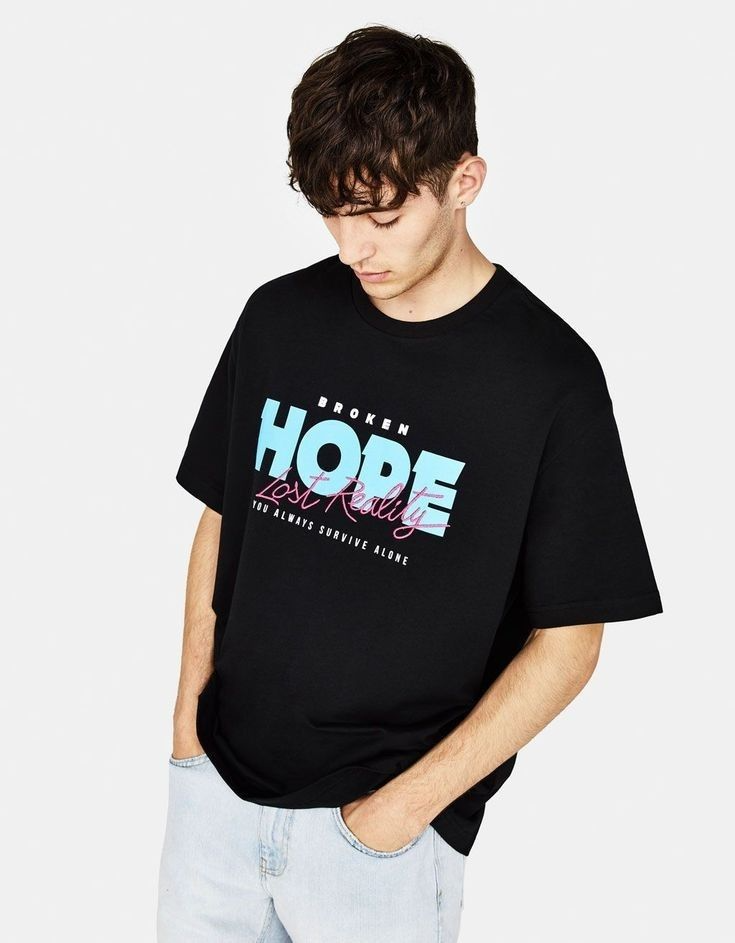Currently Empty: $0.00

A T-shirt, in its simplest form, is a garment that has transcended its humble beginnings as an undergarment. Made from cotton, jersey, or blends of fabrics, the T-shirt has become one of the most ubiquitous pieces of clothing in the world today. It is not just a staple of casual wear but also an essential tool for self-expression, marketing, and even activism. Its simplicity, comfort, and affordability have allowed it to capture the hearts of billions across the globe.
The T-shirt’s journey to global prominence began in the early 20th century, though its roots go back further. Initially, the T-shirt was not a fashion statement but a functional garment. In fact, it started as an undergarment for the U.S. military during World War I. Soldiers were given simple cotton undershirts to wear under their uniforms, which were both lightweight and breathable, offering comfort in harsh conditions. It wasn’t until the 1930s that the T-shirt began to be worn as outerwear, largely due to the rise of Hollywood stars like Marlon Brando and James Dean. These actors popularized the T-shirt as an iconic piece of casual wear through their performances in films like A Streetcar Named Desire (1951) and Rebel Without a Cause (1955). The T-shirt became synonymous with rebellion, youth culture, and an anti-establishment sentiment, marking the first instance of the garment transcending its functional role to become a symbol of individual expression.
The 1960s and 1970s saw the T-shirt further solidify its place in pop culture. Bands like The Beatles and The Rolling Stones began printing their logos on T-shirts, which allowed fans to show their support for their favorite musicians. The T-shirt became a means of identifying with a particular group or subculture. This was also the time when political messages started to be printed on T-shirts, with slogans advocating for civil rights, anti-war movements, and countercultural ideas. The role of T-shirts in activism cannot be overstated. In the 1960s, T-shirts were used as a form of protest, making a statement about social and political causes. For example, the anti-Vietnam War slogan “Make Love, Not War” became a popular graphic on T-shirts, symbolizing opposition to the conflict and the broader movement for peace and civil rights.
By the 1980s, T-shirts became even more ingrained in mainstream culture. Graphic T-shirts, emblazoned with slogans, logos, and illustrations, became a staple of youth fashion, with brands like Benetton and Nike leading the charge. The T-shirt became not only a piece of casual clothing but a canvas for self-expression and corporate branding.
While the T-shirt started as a simple garment with few design elements, its design has evolved dramatically over the decades. Initially, T-shirts were plain and often worn as undershirts, but with the rise of counterculture and youth movements, graphic prints became more common. The 1950s saw the advent of “novelty” T-shirts—designs that featured catchy slogans or humorous graphics. These were a far cry from the plain, utilitarian T-shirts of the previous era. As the 1960s and 1970s progressed, T-shirts became a primary medium for graphic designers to express political, social, and cultural messages. The first T-shirt featuring a band logo, for instance, was a significant milestone in the evolution of T-shirt design.
In the 1980s, T-shirts took a more commercial direction as corporations began to realize the potential of printed logos as advertising tools. Companies like Coca-Cola and Pepsi popularized the use of branded T-shirts, turning them into a promotional item rather than just a fashion piece. The design of T-shirts also became more experimental, with the introduction of bold colors, oversized prints, and unconventional artwork.
T-shirts are not only a medium for corporate branding but have also become a platform for fine art. Artists have long recognized the T-shirt as a form of expression. Famous collaborations between artists and fashion brands, such as the collaboration between Andy Warhol and Campbell’s Soup and Keith Haring’s partnership with Chanel, have cemented the T-shirt’s place in the world of contemporary art. T-shirt design has become an accessible way for everyday people to wear art. Graphic designers and artists use the T-shirt as a canvas, producing unique pieces of wearable art that transcend traditional gallery spaces. This democratization of art has led to a surge in creativity, with T-shirts often serving as an alternative art form that can be worn on the body.
In the world of high fashion, the T-shirt has evolved from a casual staple to a luxurious item. Designers like Karl Lagerfeld and brands like Supreme have used the T-shirt as a key element in their collections, transforming it into a statement piece that signifies wealth, status, and exclusivity. The T-shirt’s role in high fashion reflects a broader trend toward the blending of casual and formal wear, where boundaries between “high” and “low” fashion are becoming increasingly fluid. The T-shirt has been embraced by fashion houses around the world, from Paris to New York, and has even made its way onto the runways of couture shows. Designers are using innovative fabrics, intricate designs, and even incorporating technological elements into T-shirts, ensuring their place at the forefront of fashion.
The fabric used in T-shirt production plays a significant role in determining the garment’s comfort, durability, and cost. The most common material used in T-shirts is cotton, which is appreciated for its softness, breathability, and natural fiber content. Cotton T-shirts have remained a staple in casual fashion due to their comfort and versatility. However, the choice of fabric in T-shirts has evolved over time, with manufacturers experimenting with various alternatives to meet different consumer needs and environmental demands.
Polyester is another common fabric used in T-shirt production. Known for its durability and wrinkle resistance, polyester is often blended with cotton to create a fabric that is both comfortable and easy to care for. Polyester blends are more affordable to produce and have been popularized in fast fashion. Despite its advantages, polyester has received criticism for being non-biodegradable and contributing to microplastic pollution in the oceans.
As consumers become more environmentally conscious, there has been a growing demand for sustainable fabrics. Organic cotton, which is grown without the use of pesticides or synthetic fertilizers, has become an eco-friendly alternative to conventional cotton. Bamboo and hemp are also being used to create T-shirts with a smaller environmental footprint. These materials require fewer resources to grow and are biodegradable, making them a more sustainable choice.
Recycled fabrics are another emerging trend in the T-shirt industry. T-shirts made from recycled plastic bottles or post-consumer textiles have become popular among eco-conscious consumers. This innovation not only helps reduce waste but also contributes to the growing movement toward sustainable fashion.
The process of manufacturing T-shirts involves several stages, from cotton farming to the final garment that is sold in stores. It starts with the production of raw materials, such as cotton, which is harvested from cotton plants. The cotton fibers are then spun into yarn, which is woven into fabric through a process called weaving or knitting. Knitted fabrics are more commonly used in T-shirt production because they are stretchy and comfortable.
Once the fabric is ready, it is cut into the shapes required to make a T-shirt. The pattern is usually standardized, with slight variations for different sizes. These pieces are then sewn together using industrial machines. The process involves attaching the sleeves, collar, and hem to the main body of the T-shirt. In some cases, embroidered logos or designs are added during this stage.
After the T-shirt is assembled, it undergoes various finishing processes. This may include washing, dyeing, or printing. Screen printing, heat transfer printing, and direct-to-garment printing are common techniques used to add designs, slogans, or logos to T-shirts. The final product is then packaged and distributed to retail outlets.
While mass production allows T-shirts to be produced in large quantities at low costs, it also has environmental implications. The textile industry is one of the largest polluters in the world, with issues ranging from water consumption in cotton farming to toxic chemicals used in dyeing fabrics. As a result, the demand for more sustainable production processes has grown, with companies exploring waterless dyeing techniques, using plant-based dyes, and implementing closed-loop systems that recycle water and chemicals in production.
T-shirts are an essential part of casualwear, and their widespread appeal can be attributed to their versatility. T-shirts are appropriate for a variety of settings—from lounging at home to hanging out with friends or even attending casual social events. The ability to pair a T-shirt with different kinds of clothing, such as jeans, shorts, skirts, or even blazers, makes it a versatile piece of clothing.
The rise of athleisure has also played a role in the widespread popularity of T-shirts. Athleisure, which combines athletic wear with casual fashion, often includes T-shirts as a central component of the wardrobe. The blend of comfort, style, and functionality has made T-shirts ideal for active lifestyles. Additionally, T-shirts are often worn as loungewear or sleepwear, making them a go-to garment for relaxation.
In the context of streetwear, T-shirts are often used as a medium for expression. Urban subcultures, including hip-hop, skateboarding, and graffiti, have embraced T-shirts as a way to make statements about identity, belonging, and social consciousness. The design of the T-shirt often reflects the individual’s style or affiliation with a specific movement or community.
T-shirts are more than just a piece of clothing; they have become an essential tool for self-expression. People wear T-shirts to communicate their interests, beliefs, and personality. Graphic T-shirts with logos, band names, political slogans, and iconic images are widely popular because they allow individuals to showcase their identity to the world. Whether it’s a concert tee from a favorite band, a T-shirt featuring a beloved movie character, or a shirt with a powerful social message, the T-shirt has become a way for people to make a personal statement.
T-shirts have also played a significant role in social movements. From the feminist slogans on T-shirts to shirts promoting environmental causes, T-shirts have been used as a vehicle for spreading important messages. In many ways, T-shirts act as a form of protest or activism, as individuals wear their beliefs on their sleeves—literally. For example, during the 1980s and 1990s, T-shirts with slogans like “Save the Earth” or “Support Our Troops” were seen as ways of supporting important social causes.
The T-shirt industry is a massive segment of the global fashion market. According to recent estimates, the global T-shirt market is worth billions of dollars, with demand driven by consumer trends, pop culture, and fashion innovations. T-shirts are produced and sold by a wide range of companies, from mass-market retailers like H&M and Zara to high-end brands like Gucci and Louis Vuitton. The flexibility of T-shirts in terms of pricing makes them accessible to consumers from all economic backgrounds.
The rise of fast fashion has led to an explosion in the number of T-shirts produced each year. Companies like Uniqlo, Zara, and Forever 21 are able to mass-produce T-shirts quickly and inexpensively, making them available to consumers at low prices. However, this rapid production comes with environmental and ethical concerns. The fast fashion model often involves low-wage labor in developing countries, and the production of large quantities of cheap clothing leads to massive amounts of textile waste. Additionally, the demand for constant newness in fashion means that clothing, including T-shirts, is often discarded after just a few wears.
While fast fashion has brought T-shirts to the masses, it has also prompted a shift toward slow fashion, with an increasing number of consumers seeking out high-quality, sustainably made T-shirts. Many consumers are willing to pay more for T-shirts that are ethically sourced, made

